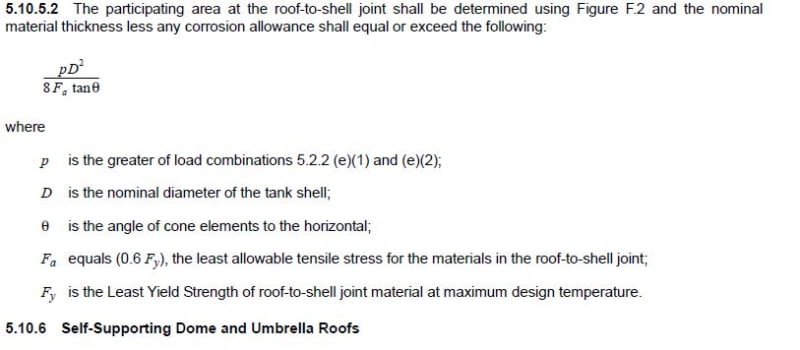Hi
I have a query regarding unit of required area given by equation in 5.10.5.2
I have a very small tank design to API 650, diameter = 3m height = 4m
If I use units for equation, D (m), p (kPa) (value 1.87), Fa (N/mm2/ Mpa) (value 160) I get a required area of 0.08mm2
Can this be correct? seems very small
there are no units given in the definitions given below the equation
If I use mm for all length units ie D =3000, p = 0.00187, Fa = 160 this becomes 88mm2 - more reasonable, but not the units of D & p used generally through the code
A secondary question - if this area (whichever it is) can be satisified by say detail I of F2 do I still need the angle specified in 5.1.5.9 e)?
many thanks
Andyecho
I have a query regarding unit of required area given by equation in 5.10.5.2
I have a very small tank design to API 650, diameter = 3m height = 4m
If I use units for equation, D (m), p (kPa) (value 1.87), Fa (N/mm2/ Mpa) (value 160) I get a required area of 0.08mm2
Can this be correct? seems very small
there are no units given in the definitions given below the equation
If I use mm for all length units ie D =3000, p = 0.00187, Fa = 160 this becomes 88mm2 - more reasonable, but not the units of D & p used generally through the code
A secondary question - if this area (whichever it is) can be satisified by say detail I of F2 do I still need the angle specified in 5.1.5.9 e)?
many thanks
Andyecho

